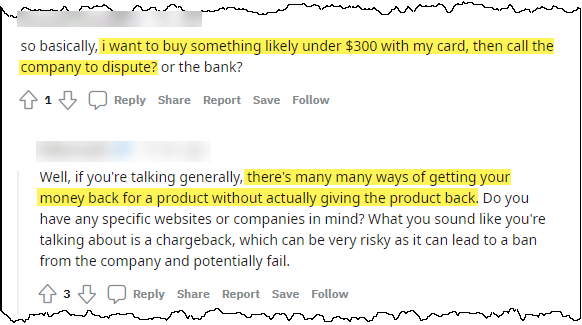This post will explain what return fraud and refund fraud are, the FTID method, and how online retailers can fight back against fraudsters.
As eCommerce continues to grow, online fraud seems to keep pace with innovations too. One form of eCommerce fraud that's quickly becoming a challenge for merchants to manage is refund fraud.
But online merchants can prevent this fraud (or at least reduce it) by putting proper strategies and solutions in place. Keep reading to learn more about return/refund fraud, fake tracking I.D. (FTID) and how to prevent it from hampering your business growth.
What is eCommerce Refund Fraud?
Return fraud happens when fraudsters purchase an item and then request a refund without returning the items. Bad actors take advantage of businesses with customer-friendly return policies by exploiting the return process and keeping goods after they've been refunded for the purchase.
These fraudsters can either be individual customers taking advantage of opportunities to keep refunded products, or organized fraud rings that plan large-scale schemes to defraud companies.
Consider the excerpt below from a real Reddit thread.

Types of Return Fraud
Return fraud is just as harmful of a problem as chargebacks are for a business's bottom line. There are four main types of return fraud - item not received (INR) or did not arrive (DNA), empty box (EB) or partially empty box (PEB), fake tracking ID (FTID), and refund as a service fraud.
Item Not Received / Did Not Arrive Fraud
With this type of return fraud, bad actors claim that their item did not arrive or was stolen from their porch. They are usually given a refund and get to keep the item. Oftentimes there's no definite way to verify that the goods were stolen, so the merchant assumes liability and refunds the customer regardless.
There are several clever ways that merchants avoid this type of fraud from occurring:
- Send a delivery confirmation email. Promptly notifying customers that their order has been delivered is a best practice for any eCommerce merchant. Delivery confirmation emails will not only help to deter porch theft, but they can act as proof that the order was delivered in the event that the customer claims they didn't receive it.
- Require a customer signature upon delivery. Although this introduces friction into the purchasing experience, it can be an effective approach to combatting return fraud. Many merchants use this tactic if the value of an order passes a certain threshold, or if they're selling products that are prone to fraud (for example, luxury goods).
Fake Tracking ID Fraud
What Is FTID?
Fake tracking ID (FTID) is a type of return fraud that happens when a bad actor requests a refund for an item and receives a return shipping label from the business. Then, the fraudster attaches the shipping label to an envelope, often junk mail, instead of returning the item. They will claim they returned the item, and the tracking ID will show something was mailed, but they did not actually mail the item.
The best way to prevent this type of fraud is to require a return shipping receipt that the customer must include inside the box. Without the receipt, the return cannot be processed and a refund will not be distributed to the customer.
Refund as a Service
Believe it or not, there are organized fraud organizations that sell refunds as a service. They will use social engineering to manipulate customer service reps into providing a refund on behalf of their customers. They will then keep a portion of the refund for themselves.
The best way to prevent this type of fraud is to have clear guardrails in your return policy that prevent fraudsters from taking advantage of your business. It's a best practice to temporarily modify your return policy to include a holiday return cutoff date. This way, legitimate customers will be more inclined to return an item before the cutoff date, and it will hinder any plans that fraudsters had to fraudulently use the products before they request a refund from the merchant. As a business owner, you can educate your customer service and logistics team members you work with about return fraud and how to identify suspicious activity.
Empty Box Fraud
With empty box (EB) fraud, bad actors will claim that an item was packaged improperly or stolen during shipment. With partially empty box (PEB) fraud, bad actors purchase a small item with a high value and a large item with a low value. They will then claim the high-value item was not included in the box.
This type of return fraud is particularly difficult to prevent, and it's even more difficult to determine whether the customer is being honest or not. It's possible that an item could've been stolen during the shipping process, but without proof of this, you'll likely be stuck with refunding the customer and accepting the loss.
Fighting Back Against Refund Fraud
While refund fraud is a serious concern for every eCommerce business, it can be effectively prevented with the right combination of tactics.
Refund fraud is difficult to stop on the front end because it's not payment fraud. And while there is no one-size-fits-all solution for refund fraud, there are steps you can can take to reduce it. Consider starting with silos in your organization--specifically your warehouse/fulfillment services and customer service departments.
Professional refunders know that many warehouses are "backed up" with returns, and they'll exploit this as a weakness. How do they do it? Fraudsters will monitor the tracking I.D. and contact the customer service or return department as soon as the tracking number shows the item was received by the warehouse. Then they'll demand their refund, which the customer service department usually grants without checking with the warehouse to confirm the original item was returned.
With our fraud solutions, we use AI and machine learning capabilities to prevent return fraud and approve more legitimate transactions for your business. If you're interested in learning more about our solution, request a demo and someone from our team will walk you through how Vesta's platform works.
Preventing Return Fraud with Machine Learning
As previously mentioned, there are a variety of different ways you can prevent return fraud from impacting your business. To start, you might consider investing in a fraud prevention solution that rejects orders from customers prone to fraudulent activity. Vesta's end-to-end transaction guarantee platform will stop fraudulent purchases from being approved, and will also cover the cost of fraudulent orders that are mistakenly approved.
Vesta is the world’s first and only transaction guarantee platform using machine learning trained on 25 years of global data across the world’s largest mobile networks and digital merchants. If there's one solution that can help stop return fraud from hurting your business, it's Vesta's.
.png)
.png)
%20(1).png)
.jpeg?width=808&height=271&name=AdobeStock_428879800%20(1).jpeg)


